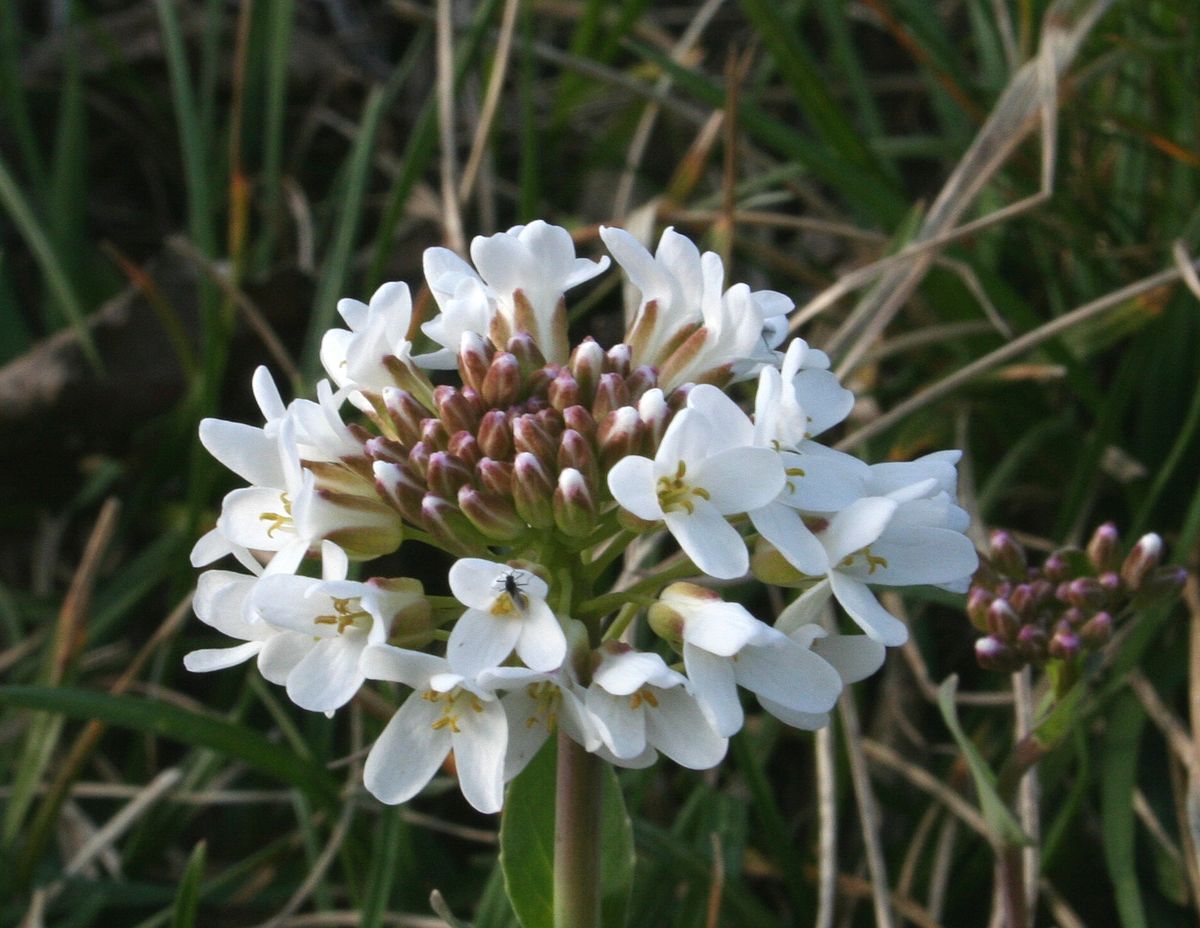Cika's draba
(Noccaea cikaea)

Description
Noccaea cikaea, also known as Cika's draba or Cika's whitlowgrass, is a small flowering plant belonging to the Brassicaceae family. This plant is endemic to the Balkan Peninsula, where it grows in rocky areas and alpine meadows at elevations between 1,400 and 2,500 meters above sea level. In this article, we will explore the morphology, habitat, ecology, and conservation status of Noccaea cikaea. Morphology Noccaea cikaea is a perennial herb that grows up to 10 centimeters tall. Its stem is simple or branched, and its leaves are linear-lanceolate, 5-25 millimeters long and 1-2 millimeters wide, and arranged alternately along the stem. The plant produces small white flowers, which are clustered in dense inflorescences at the tips of the stems. The flowers have four petals, six stamens, and a single pistil. The fruit is a long, narrow capsule that splits open when ripe to release the seeds. The seeds are small, brown, and round, and have a diameter of about 1 millimeter. Habitat Noccaea cikaea is a high-altitude plant that is found in rocky areas and alpine meadows in the Balkan Peninsula. It is native to Serbia, Montenegro, Kosovo, and North Macedonia, where it grows at elevations between 1,400 and 2,500 meters above sea level. The plant prefers calcareous soils and is often found growing on limestone cliffs and slopes. It is adapted to the harsh alpine environment and can tolerate cold temperatures, strong winds, and low nutrient availability. Ecology Noccaea cikaea is an important plant for the alpine ecosystem, as it provides food and habitat for a variety of insects and other small animals. The plant is pollinated by insects, such as bees and butterflies, which are attracted to its small white flowers. The seeds of Noccaea cikaea are dispersed by wind, which helps the plant to colonize new areas and maintain genetic diversity. Conservation status Noccaea cikaea is considered a rare and endangered species, with a restricted distribution and a small population size. The plant is threatened by habitat loss due to human activities, such as agriculture, mining, and tourism. Climate change is also a potential threat to the species, as it may alter the alpine environment in which the plant grows. In Serbia and Montenegro, Noccaea cikaea is protected by law, and its collection, trade, and destruction are prohibited. However, illegal collection and destruction of the plant still occur due to the high demand for rare and endemic plant species. Conclusion Noccaea cikaea is a small but important plant species that is endemic to the Balkan Peninsula. The plant is adapted to the harsh alpine environment and provides food and habitat for a variety of insects and other small animals. However, the species is threatened by habitat loss and climate change, and its conservation status is currently listed as endangered. Efforts to protect and conserve the species, such as the establishment of protected areas and the enforcement of laws against illegal collection and destruction, are necessary to ensure its survival for future generations.
Taxonomic tree:







